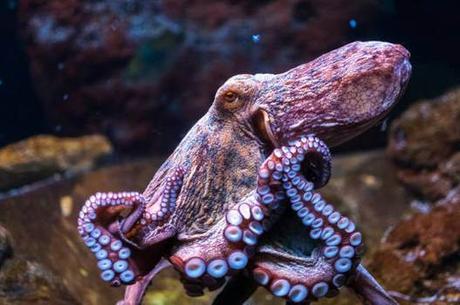
“The elusive octopus genome has finally been untangled, which should allow scientists to discover answers to long-mysterious questions about the animal’s alienlike physiology: How does it camouflage itself so expertly? How does it control—and regenerate—those eight flexible arms and thousands of suckers? And, most vexing: How did a relative of the snail get to be so incredibly smart—able to learn quickly, solve puzzles and even use tools?
“The findings, published today in Nature, reveal a vast, unexplored landscape full of novel genes, unlikely rearrangements—and some evolutionary solutions that look remarkably similar to those found in humans. (Scientific American is part of Nature Publishing Group.)
With the largest-known genome in the invertebrate world—similar in size to that of a house cat (2.7 billion base pairs) and with more genes (33,000) than humans (20,000 to 25,000)—the octopus sequence has long been known to be large and confusing. Even without a genetic map, these animals and their cephalopod cousins (squids, cuttlefishes and nautiluses) have been common subjects for neurobiology and . . . .” Sourced through Scoop.it from: www.salon.com
GR: Again, I have to say, “We are Not Alone.” SETI scientists are prepared to attempt to decode any message they receive from space. Perhaps they should concentrate on understanding the communications of animals on Earth. Before it’s too late.

